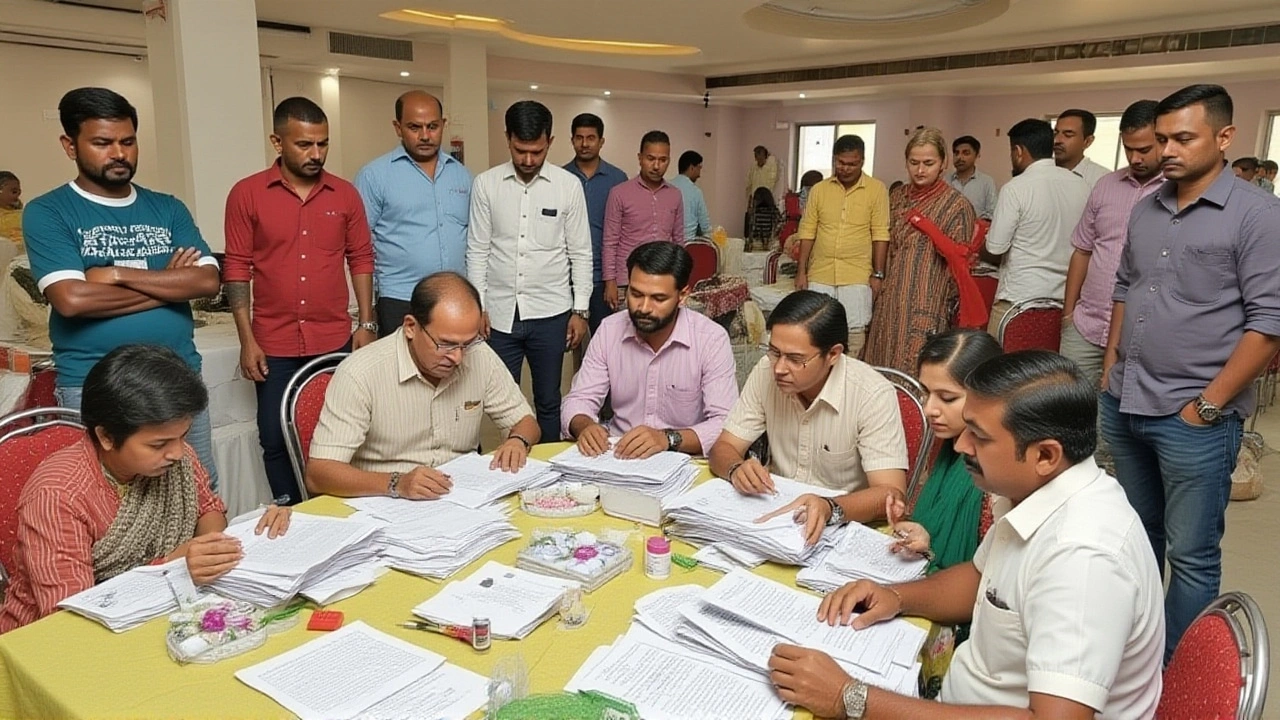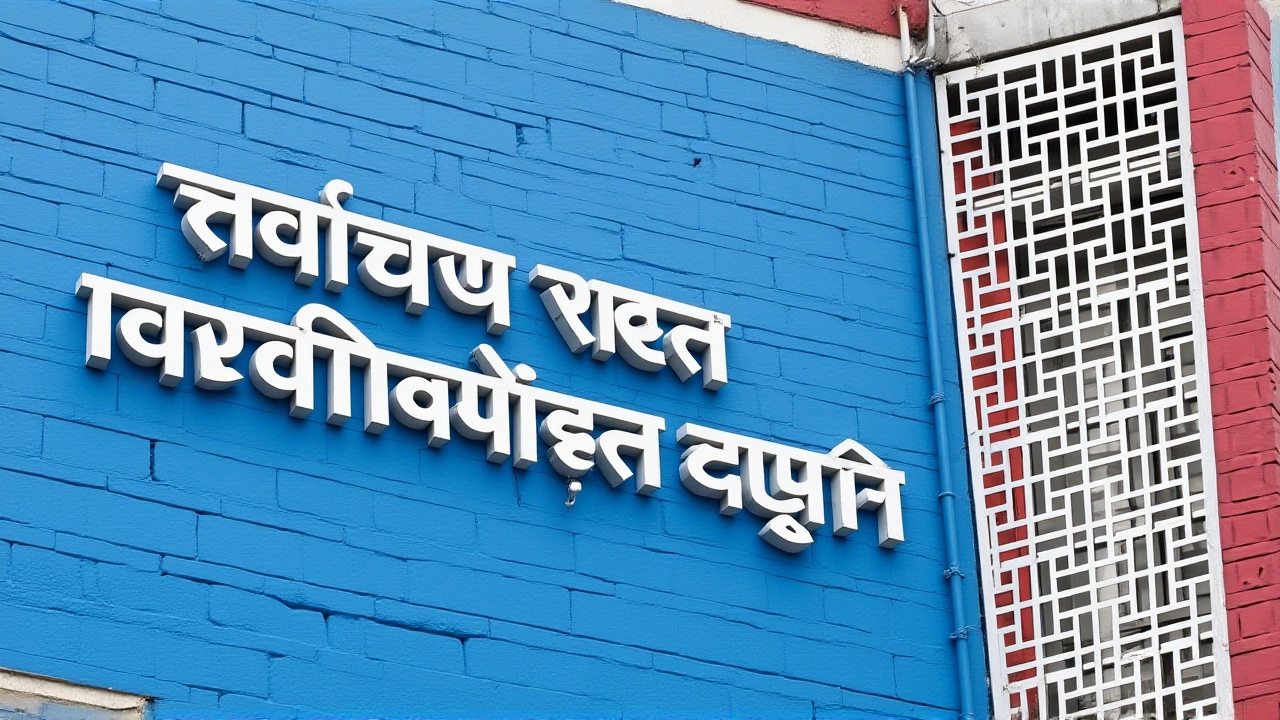The National Democratic Alliance has clinched a decisive majority in the Bihar Legislative Assembly elections 2025Bihar, with the Bharatiya Janata Party winning 89 seats and the Janata Dal (United) securing 85 — a combined 174 out of 243 assembly seats. The results, officially declared by the Election Commission of India on November 13, 2025, came after a record-breaking voter turnout of 64.66 percent — the highest in Bihar’s electoral history since 1951. Across 45,341 polling stations, over 67 million voters turned out, shattering the previous record of 62.57 percent set in 2000. This wasn’t just a win. It was a mandate — quiet, massive, and unmistakable.
A Turnout That Redefined Political Engagement
What made this election different wasn’t just who won — it was who showed up. In villages along the Ganges, in the crowded lanes of Patna, and even in remote blocks of the Kosi region, people waited in line for hours. Many carried their voter ID cards like badges of honor. The Election Commission of India deployed 67,902 polling agents, each assigned by contesting candidates, and conducted mock polls at every station before dawn on voting day. The result? A surge in participation that outpaced even the 57.29 percent turnout in the 2020 assembly polls and the 56.28 percent seen in the 2024 Lok Sabha elections.
Why now? Analysts point to a mix of local development promises, youth mobilization, and a sense of political urgency. In districts like Muzaffarpur and Nawada, first-time voters — many of them women — formed long queues. One 19-year-old student from Patna Sahib told reporters, "My grandmother voted in 1977. I’m voting because I want to decide who runs this state. Not just my father or my uncle. Me."
The Seat Battle: BJP, JD(U), and the Shadow of Nitish Kumar
The NDA’s victory was built on a tight alliance. The BJP dominated in urban centers like Patna, Muzaffarpur, and Vaishali, while the JD(U) held firm in the rural heartlands of Bhojpur, Saran, and Siwan. Key wins included Ram Kripal Yadav defeating RJD’s Ritlal Yadav in Danapur, and Pramod Kumar Singh winning Rafiganj with over 107,500 votes — the highest individual tally of the election.
But the big question hanging over the victory was this: Who leads? Nitish Kumar, the seven-time Chief Minister and JD(U) patriarch, was visibly present at victory rallies in Patna, waving to crowds alongside Prime Minister Narendra Modi, who flew in for a celebratory address. Yet, no official announcement followed. Was this a power-sharing moment — or a prelude to tension?
Behind the scenes, sources suggest JD(U) leaders are pushing for Kumar’s return as CM, while BJP’s state unit is quietly lobbying for a more neutral figure. The party’s 89 seats give it numerical parity with JD(U)’s 85 — but BJP’s national clout could tip the balance. Meanwhile, the RJD, led by Tejashwi Yadav, managed only 25 seats — a sharp drop from 2020. His brother, Tej Pratap Yadav, lost his seat in Barh, a personal blow that sent ripples through the party.
The Opposition’s Struggle and the Rise of Regional Voices
The Rashtriya Janata Dal (RJD) failed to make a comeback, despite massive rallies and a campaign centered on caste solidarity. The Lok Janshakti Party (Ram Vilas) held onto 19 seats, mostly in the eastern districts, while the Indian National Congress collapsed to just six seats — its worst performance in decades. The All India Majlis-e-Ittehadul Muslimeen (AIMIM) won five seats, including Chainpur and Kargahar, proving its foothold in Muslim-majority pockets.
And then there was Hamro Apna Makkhan Singh (HAMS), a new regional outfit that stunned observers by winning five seats. Founded just a year ago by a former JD(U) worker, HAMS ran on a platform of farmer debt relief and local hiring. Its victory in Nokha and Jhajha signaled a shift: voters aren’t just choosing parties — they’re choosing voices that speak their language.
What Happened in the Constituencies That Mattered
Some results were telling beyond numbers. In Patna Sahib, BJP’s Ratnesh Kushwaha defeated INC’s Shashant Shekar by over 28,000 votes — a district once considered an RJD stronghold. In Nawada, Vibha Devi won with 87,423 votes, becoming one of the few women to win a general seat in a state where female representation in the assembly remains below 10 percent.
Meanwhile, Damodar Rawat’s 108,317-vote win in Jhajha was the highest in the state. His campaign focused on irrigation and road access — issues ignored by national parties. "They promised schools," he said at his victory rally. "I delivered water. They promised jobs. I delivered roads. That’s why they voted for me."

What’s Next? The Chief Minister Puzzle
The NDA’s win doesn’t end the drama — it begins a new chapter. With both BJP and JD(U) holding nearly equal seats, the question isn’t whether Nitish Kumar will return — it’s whether he can. His health, his relationship with Modi, and the internal dynamics of JD(U) will all be scrutinized. Some BJP leaders are already hinting at a coalition government without Kumar, citing his controversial past alliances with RJD.
Meanwhile, the RJD is reeling. Tejashwi Yadav has called for a "reboot," but without a clear leader or strategy, the party risks fragmentation. The Congress? It’s now irrelevant in Bihar. And HAMS? It’s being watched by parties across India as a model for hyper-local politics.
The Chief Electoral Officer, Bihar has already begun preparing for the next assembly session, scheduled for December 5, 2025. The swearing-in ceremony will be held at the historic Bihar Vidhan Sabha building in Patna — the same place where Nitish Kumar was sworn in seven times before.
Historical Context: How This Election Changes Bihar’s Story
Bihar’s politics has always been a rollercoaster. In 1951, turnout was just 42.6 percent. In 2005, the state saw its first anti-corruption wave that ousted Lalu Prasad. In 2015, the NDA won with a mandate for development. In 2020, the RJD-JD(U)-Congress alliance came back with caste as its engine.
This time, it’s different. Voters didn’t just choose between caste and development. They chose competence. They chose delivery. They chose candidates who showed up — not just on stage, but in fields, schools, and hospitals. The old formulas are crumbling. And for the first time in decades, Bihar’s voters didn’t just react to politics — they shaped it.
Frequently Asked Questions
Why was the voter turnout in Bihar 2025 so high?
The 64.66% turnout was driven by aggressive voter awareness campaigns, youth mobilization through social media, and local candidates focusing on tangible issues like water access, road connectivity, and job creation. The Election Commission’s use of GPS-tracked vehicles for security and the deployment of over 67,000 polling agents also boosted confidence in the process. Many first-time voters, especially women, reported feeling heard for the first time.
Can Nitish Kumar become Chief Minister again despite BJP’s 89 seats?
Yes, technically — because the NDA holds a majority, and JD(U) is its largest partner by seat count in the alliance. But BJP’s higher seat tally and national leadership may pressure JD(U) to accept a compromise CM candidate. Nitish Kumar’s age (70) and recent health issues are also being weighed. His return isn’t guaranteed — it’s negotiable.
How did HAMS win five seats with no national backing?
HAMS, a local party founded by former JD(U) worker Makkhan Singh, ran hyper-local campaigns focused on farmer debt relief, panchayat empowerment, and hiring local youth as government assistants. In constituencies like Nokha and Jhajha, they outperformed big parties by simply showing up — holding weekly village meetings, fixing broken pumps, and documenting complaints. Voters rewarded reliability over rhetoric.
Why did the Congress collapse so badly in Bihar?
The Congress failed to connect with any key demographic — neither youth, nor Dalits, nor Muslims. Its candidates were mostly outsiders or old-guard figures with no local presence. In 2020, it won 12 seats; in 2025, it won six. With no state-level leadership and no clear message beyond opposing the NDA, it became invisible to voters who wanted solutions, not slogans.
What does the AIMIM’s win in five constituencies mean for Bihar’s politics?
AIMIM’s wins in Chainpur, Kargahar, and other Muslim-majority areas show that identity-based politics still holds weight — but only when paired with local delivery. The party didn’t just campaign on religious identity; it promised better sanitation, school infrastructure, and employment quotas for youth. Its success proves that even minority-focused parties must offer governance to survive in Bihar’s evolving political landscape.
How did the Election Commission ensure transparency in vote counting?
The ECI used a real-time digital system where Returning Officers uploaded results directly to results.eci.gov.in, with each form (Form-20) digitally signed and timestamped. Live video feeds from 243 counting centers were monitored by observers from civil society groups. The commission also allowed media and candidate agents to verify data in real time — a first in Bihar’s history, reducing allegations of manipulation.
